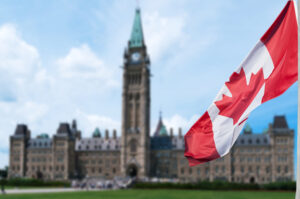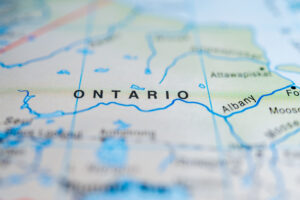The Federal Election and the Municipal Agenda
 For all federal political parties, the road to electoral success runs through the urban and suburban neighbourhoods of Canada’s nine largest metropolises. In these ridings, close multi-party election races are common and small swings in voter preferences can be decisive.
For all federal political parties, the road to electoral success runs through the urban and suburban neighbourhoods of Canada’s nine largest metropolises. In these ridings, close multi-party election races are common and small swings in voter preferences can be decisive.
The parties know that weakly-aligned voters in these constituencies can be swayed with well-targeted messaging, often addressing very local ‘issues of the day.’ These local issues can be ‘municipal’ issues, either explicitly or by implication. Facing fierce electoral competition, respect for provincial jurisdiction over municipal governments can be an early casualty.
As the election campaign accelerates, all political parties are now making parallel promises including housing, medicare, transit, gun control, long-term care, climate-change, and taxing digital enterprise and financial services. Many of these election promises have direct implications for cities and for municipal governments generally.
Despite the continued role of all three levels of government on public infrastructure, today’s political parties don’t have an explicit “municipal agenda.” Niche issues focused on specific voter demographics have pushed away “national” campaign issues such as Paul Martin’s “New Deal for Cities,” the urban advocacy of the late Jack Layton, or under Stephen Harper, and the steady growth of the Canada Gas Tax Fund to $2 billion in annual transfers to municipalities.
How Do Municipalities Leverage Themselves Federally?
To avoid having municipal issues overshadowed during the 2021 election, municipal leaders often look to leverage the election priorities of Canadians, like health care, housing, climate change and economic recovery. The 2,000-member Federation of Canadian Municipalities and its Big City Mayors’ Caucus wants billions in federal government investment in affordable housing, rural connectivity, improved public transit, more resilient infrastructure, and initiatives to help those experiencing homelessness.
In the run-up to the 2021 election call, the minority Liberal Government took a number of steps to bolster its stock with various groups and regions across Canada. Some of these steps included fulfilling promises made during the last election. Others were new commitments, found in the 724 page 2021 Budget and a flurry of bills introduced in the last Parliament.
There are now specific calls to address issues not found in the recent federal budget, such as building 20,000 homes for Canada’s urban Indigenous population. Conversely, despite the election focus on gun control issues and the disturbing tide of firearm incidents across Canada, there is a surprising lack of municipal interest in newly acquired local gun-control powers.
An example of the priorities of Canada’s mayors can be found in Toronto Mayor John Tory’s top five “asks,” including:
- COVID Budget Relief Funding to cover transit ridership losses and pressures on the shelter system
- Support for Toronto’s 24-month COVID-19 “Housing and Homelessness Recovery Plan”
- Continued investment in Toronto’s public transit system
- A more robust mental health care system, including supports to address homelessness and substance use, including the tragic rise in opioid-related deaths
- Following through on the federal government’s commitment to fund ‘community violence prevention programs’
The last two federal elections also featured a major focus on infrastructure spending – transit, waterworks, digital connectivity, “green” infrastructure, “clean fuel” retrofitting of fleets. With the majority of Canada’s infrastructure in municipal hands, municipalities have a big stake in what gets built and who pays to maintain it.

Ontario municipalities have additional responsibilities for human services functions, so promises affecting long-term care homes, refugee settlement, homelessness, and child care are very much ‘municipal’ issues. The Ontario Big City Mayors have urged more federal action on the opioid crisis and community mental health issues, and each major party has campaign promises around mental health supports.
Municipalities and the Feds, Post-Election
Parliament’s response to the pandemic produced a generous and necessary federal aid package for municipalities, especially for those with large transit systems. Is this new funding likely to be maintained, particularly if some cities now project notable operating-budget surpluses at the end of 2020?
Over the medium term, e-commerce, on-line retail, work-from-home, and ride-sharing are combining to erode the municipal business tax base and transit revenues. Despite this, new federal tax proposals have largely ignored the need for major digital enterprises to make a more significant tax contribution to fund the municipal facilities and services on which their profitability and competitiveness rely.
After the election, will we see a return to small-scale, short-lived program announcements by federal authorities, often at the frontiers of their constitutional purview? Too often project-specific announcements with satisfying but ephemeral communications value leave a legacy of underfunded expectations with local communities.
Municipalities may indeed be constitutionally “creatures of the province.” In the race to win-over Canada’s big cities and urban fringe ridings, however, federal leaders appear to have misplaced their copy of the Constitution Act. Whether that oversight works to the advantage of municipal governments may depend on the outcome of the election.
There may be a post-election fiscal stock-taking by whoever stands in the ‘new shoes’ of the federal finance minister. Especially with a post-pandemic ‘hangover,’ as someone once observed about Canada’s fiscal realities, “when other orders of government get a cold, municipalities can get pneumonia!”